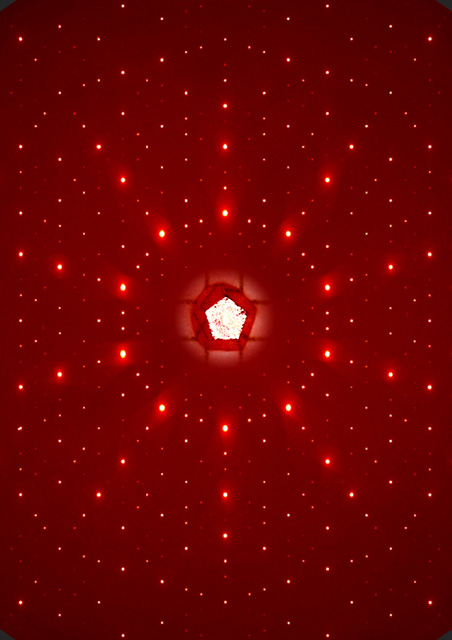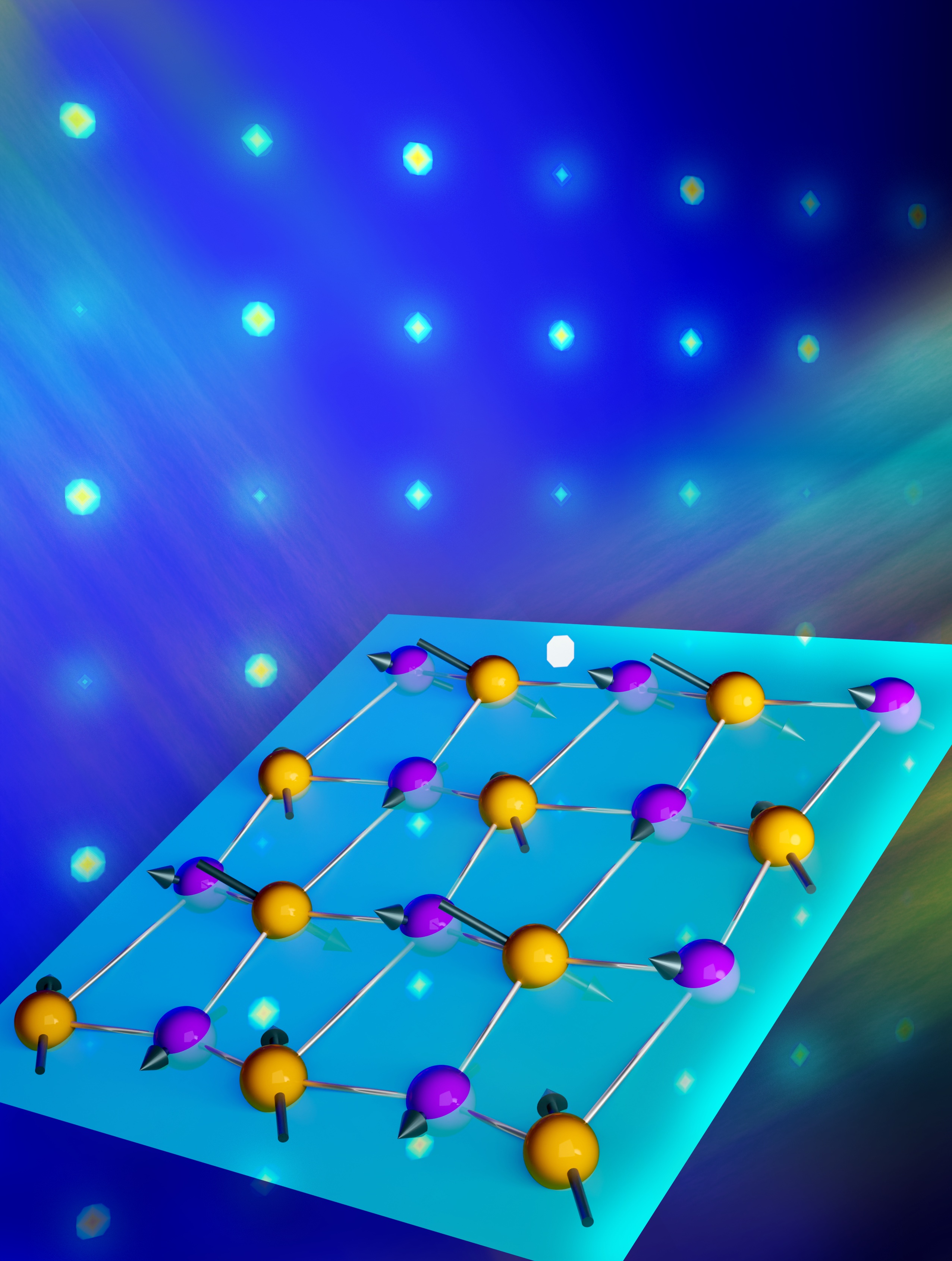A New Class of Magnetic Materials with Novel Structural Order
The discovery of the first binary magnetic quasicrystals will enable the unraveling of the fundamental relationship between the structure and magnetism in aperiodic materials.

The Science
A new class of binary alloys made from rare earth elements and cadmium has been discovered that manifests the unique 5-fold symmetry and structural characteristics of quasicrystals and has magnetic properties, providing the first step toward answering a much debated question as to whether or not it is possible to achieve long-range magnetic order in a quasicrystalline material.
The Impact
This discovery will enable detailed studies of the effect of aperiodicity on magnetism in quasicrystals in particular, and complex systems in general, allowing comparison to the properties of related crystalline materials whose atomic compositions are close to that of the quasicrystals.
Summary
Quasicrystals are fascinating solids whose atomic arrangements are not periodic, but have long range positional order and 5-fold, 8-fold and higher rotational symmetries that are forbidden in conventional crystals. Three decades after their discovery in 1984, with over a hundred alloys synthesized, and one naturally occurring alloy identified, quasicrystals are now considered a new class of stable materials. Their original discovery led to the 2011 Nobel Prize in Chemistry. Quasicrystals exhibit some novel mechanical properties, such as low surface friction, that are different from their related crystalline and glassy alloys whose atomic compositions are in the vicinity of their composition. Hence, the search for quasicrystals with new physical properties continues. Scientists at the Ames Laboratory have discovered a new family of binary, rare-earth containing, quasicrystals in the R-cadmium binary alloy where R = gadolinium, terbium, dysprosium, holmium, erbium, thulium and yttrium, six of which (except for yttrium) have localized magnetic moments. For this family of magnetic quasicrystals, there exist crystalline compounds, known as crystal approximants, with atomic compositions and arrangements pretty close to them. Comparison between the quasicrystals and related crystal approximants will enable scientists to unravel the relationship between the structure, dynamics and magnetism in these materials that can pave way for new designer materials for future technologies.
Contact
Alan Goldman
Ames Lab, Ames, Iowa
goldman@ameslab.gov
Paul Canfield
Ames Lab, Ames, Iowa
canfield@ameslab.gov
Funding
DOE Office of Science, Basic Energy Sciences program, including support of the Advanced Photon Source user facility for the x-ray scattering research.
Publications
Alan I. Goldman, Tai Kong, Andreas Kreyssig, Anton Jesche, Mehmet Ramazanoglu, Kevin W. Dennis, Sergey L. Bud’ko, and Paul C. Canfield, “A Family of Binary Magnetic Icosahedral Quasicrystals Based on Rare Earths and Cadmium”, Nature Materials, 2013, 12, 714-718. http://dx.doi.org/10.1038/NMAT3672
Related Links
Highlight Categories
Performer: SC User Facilities , BES User Facilities , APS



